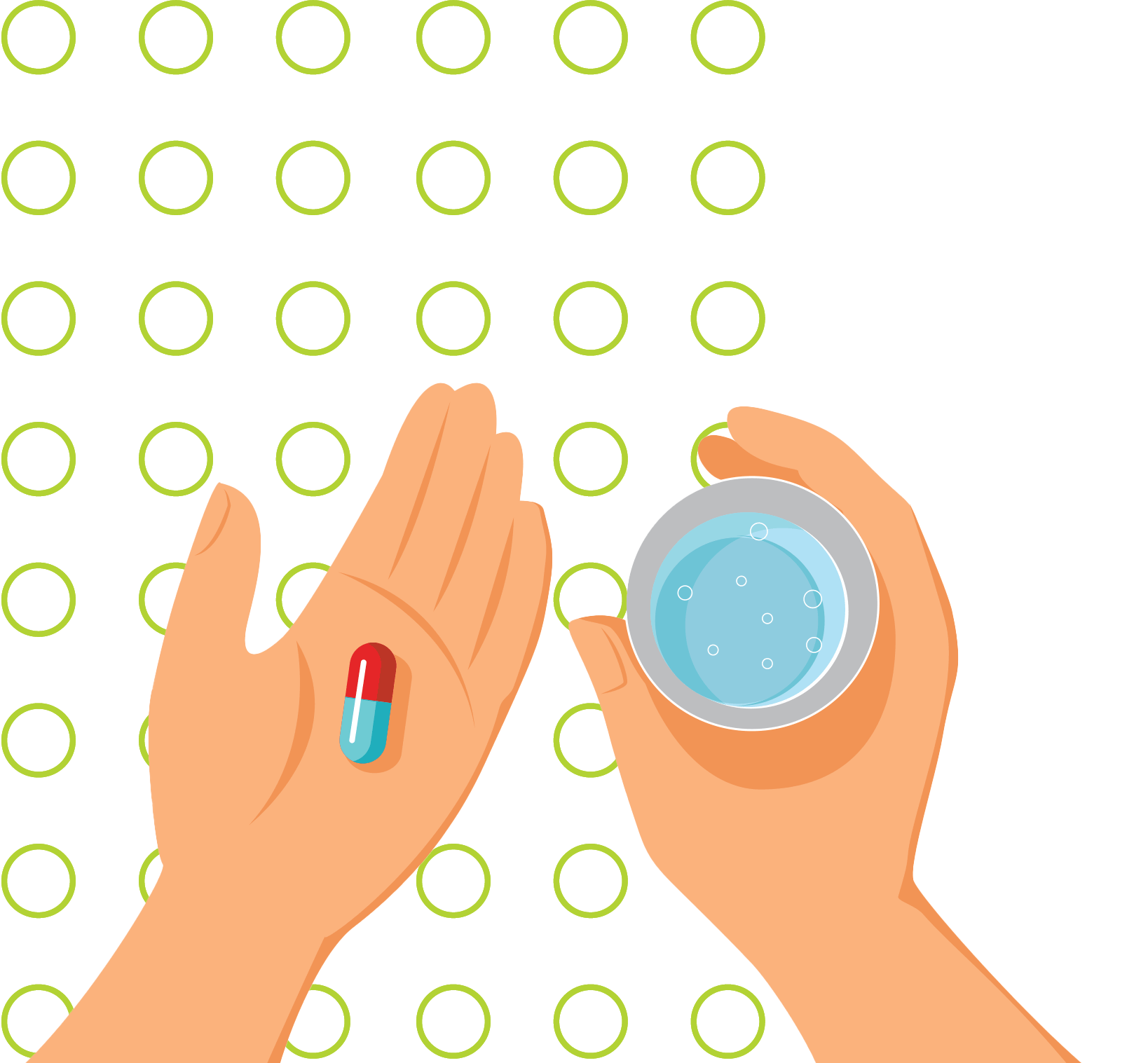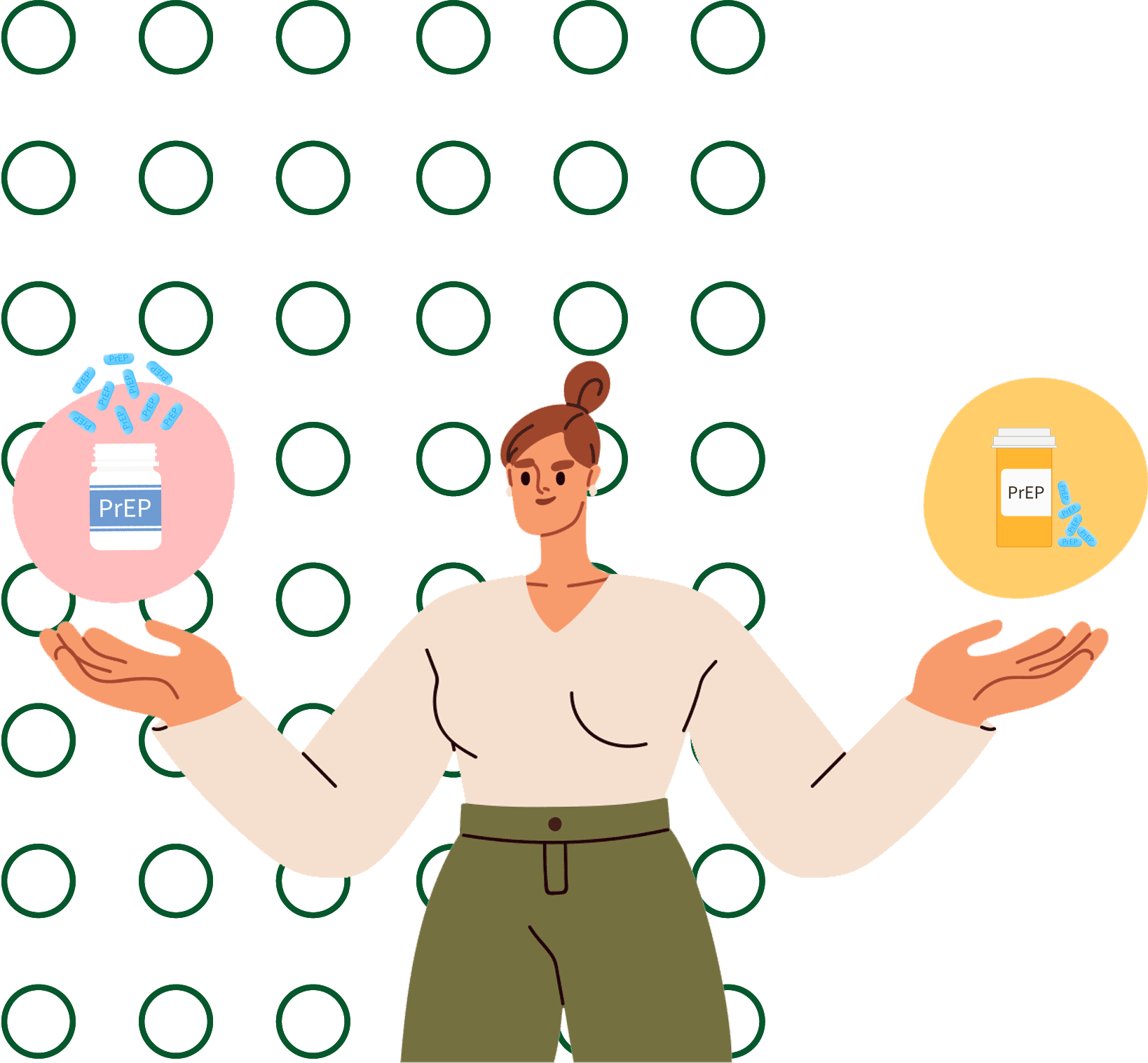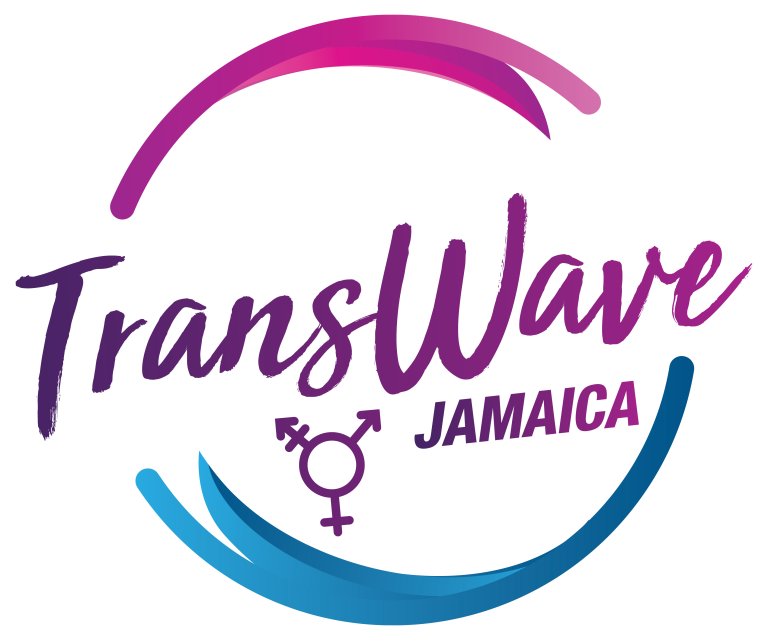Take Action
Ready to learn more
ABOUT PrEP?
01
WHAT IS PrEP?
PrEP, or pre-exposure prophylaxis, is a daily medication that reduces the risk of HIV by up to 99% when taken consistently. It’s a safe and effective option for those at higher risk of HIV transmission.
Currently, there are two FDA-approved daily oral medications for PrEP. The FDA has also approved a long-acting injectable form of PrEP.


02
HOW DOES PrEP
WORK?
PrEP is highly effective at preventing HIV when taken as indicated.
PrEP acts as a shield against HIV by using antiretroviral medications to prevent the virus from multiplying in the body. When taken consistently as directed, it can lower the risk of HIV transmission by up to 99% during sexual contact and by at least 74% for injection drug use.
03
WHO SHOULD CONSIDER TAKING PrEP?
PrEP can help protect you if you don’t have HIV and any of these applies to you:
- Have a sexual partner with HIV,
- Have not consistently used a condom, OR
- Have been diagnosed with a sexually transmitted infection (STI) in the past 6 months.
- Share needles or other equipment to inject drugs OR
- Have an injection partner with HIV
- Continue engaging in high-risk behaviors OR
- Have used multiple courses of PEP


04
WOULD PrEP BE
RIGHT FOR YOU?
PrEP might be right for you if you’re at risk of HIV and want additional protection. It’s beneficial if you find it challenging to use condoms consistently, are unsure of your partner’s HIV status, or have sexual partners who might unknowingly have HIV.
PrEP can provide peace of mind and an extra layer of safety during periods when your risk is higher. However, it’s important to remember that while PrEP protects against HIV, it doesn’t prevent other STIs or pregnancy, so condoms remain an important part of sexual health.
PrEP may not be necessary if your partners don’t have HIV or are on treatment with an undetectable viral load, as there’s no risk of transmission in these cases. If you’re already consistently using other HIV prevention methods, PrEP might not add significant benefits. Discussing your sexual health and lifestyle with a healthcare provider can help determine if PrEP is the right choice for you.
05
IS PrEP SAFE?
PrEP is safe, and no significant health effects have been observed in HIV-negative individuals who have taken PrEP for up to five years.
People taking PrEP may experience side effects, which can include nausea, diarrhea, headaches, fatigue, and stomach pain. These side effects are usually not serious and tend to lessen over time. If you are on PrEP, it is important to inform your healthcare provider about any side effects that are bothersome or do not go away.
PrEP protects you against HIV but does not protect against other sexually transmitted infections (STIs) or other types of infections. Using PrEP alongside condoms will help reduce your risk of acquiring other STIs.
06
DOES PrEP CAUSE SIDE EFFECT?
Some people who take PEP may experience side effects, such as nausea. These side effects are generally not serious and often improve over time. If you are taking PEP, please inform your healthcare provider if you have a bothersome side effect or if it persists.
PEP medicines can interact with other medications a person is taking, known as drug interactions. Therefore, it is essential to inform your provider about any other medications you are using.
07
WHAT DRUGS ARE
APPROVED FOR PrEP?
PrEP can be pills or shots.
- Truvada® (emtricitabine / tenofovir disoproxil fumarate) is for all people at risk for HIV through sex or injection drug use.
- Descovy® (emtricitabine / tenofovir alafenamide) is for sexually active men and transgender women at risk of getting HIV. Descovy® is not for people assigned female at birth who are at risk for HIV through receptive vaginal sex.
08
WHICH PrEP OPTION IS RIGHT FOR YOU?
The right PrEP option depends on your lifestyle and health needs. PrEP pills containing tenofovir disoproxil and emtricitabine are affordable, effective, and work well for most people if taken consistently. If you find daily pills difficult to manage, long-acting injections or the monthly vaginal ring might be better options. However, the vaginal ring provides less protection and is only effective during vaginal sex.
Your health considerations also play a role. If you have kidney or bone health concerns, or if you’re under 18, alternative forms of PrEP may be more suitable. Pregnant or breastfeeding individuals can safely use PrEP pills or the vaginal ring but should consult a doctor for other options. Ultimately, choosing the best PrEP depends on your ability to follow the recommended schedule and your specific health and lifestyle circumstances.
- Tenofovir disoproxil and emtricitabine pills (Truvada).
- Tenofovir alafenamide and emtricitabine pills (Descovy).
- Cabotegravir injections (Apretude).
- The dapivirine vaginal ring (DapiRing).
09
HOW DO I GET PrEP?
If you think PrEP may be right for you, visit your doctor or health care provider. PrEP is only available by prescription. Any health care provider licensed to write prescriptions can prescribe PrEP; specialization in infectious diseases or HIV medicine is not required.
Because PrEP is for people who are HIV-negative, you’ll have to get an HIV test before starting PrEP and you may need to get other tests to make sure it’s safe for you to use PrEP.
If you take daily oral PrEP, you’ll need to see a health care provider every 3 months for repeat HIV tests, prescription refills, and follow-up. If you use injectable PrEP, you’ll need to see a healthcare provider every two months for an HIV test and the injections.

